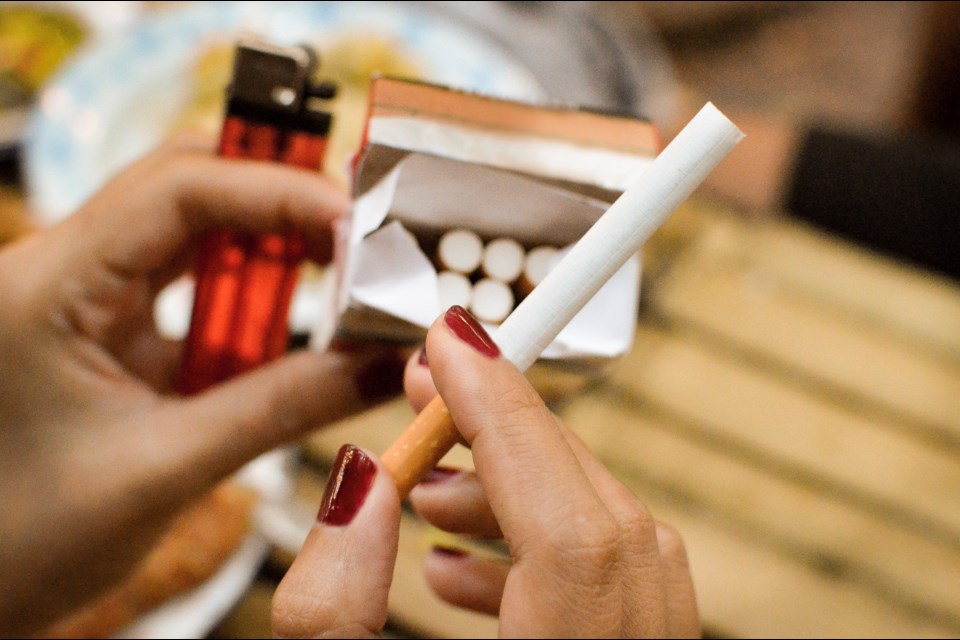The number of B.C. students in grades 7-12 who engaged in self harm in the past year is up a “shocking” amount, but fewer of them have tried alcohol, cannabis or tobacco than at any time in the past three decades.
Those are some of the findings of the 2023 B.C. Adolescent Health Survey, which covered topics such as home life, mental health, relationships and school experiences.
The survey, released Wednesday, pegs the number of students engaging in self harm, such as cutting or starving themselves, at 24 per cent, up from 17 per cent in the last survey, done in 2018.
“The fact that self harm has gone up to one in four was what was really shocking to me,” said Annie Smith, executive director of the Vancouver-based McCreary Centre Society, the non-profit organization that conducted the survey. “Seventeen per cent had done so on multiple occasions within the past year.”
Even though most students are not involved in such activity, “it’s a concerning rise,” Smith said.
The survey results are both encouraging and concerning, she said. Even though fewer youth are trying things like alcohol, cannabis and tobacco, the data show young people who do use these substances are more likely to be doing so at a younger age than they were before the pandemic.
Twenty-eight per cent of students surveyed in 2023 said they had tried alcohol before their 13th birthday, up from 23 per cent in 2018.
The survey has been conducted seven times since 1992 by the McCreary Centre Society. Last year, it was completed by about 38,500 students from 59 of B.C.’s 60 school districts. It’s considered representative of about 98 per cent of B.C. youth in grades 7-12, covering those age 12-19.
Smith said she was happy to see from the survey that more Indigenous students can speak at least a few words of an Indigenous language — up to 32 per cent from 28 per cent in 2018 — but the survey found that more students in general are struggling.
The number of students reporting that their lives are going well dropped to 66 per cent from 73 per cent in 2018.
“It seems to be a slow road back to return to the gains we were making before the COVID-19 pandemic,” Smith said. “And I see the relatively high percentages of youth who were struggling with their mental health, had experienced violence and abuse, and were struggling to see a positive future for themselves as a real call to action.”
That action could include creating more mental-health teams for children and youth, Smith said.
“A lot of communities still don’t have that,” she said. “We also really need to look at the reasons young people are not accessing the services and the care that they need.
“So many of them didn’t know where to go for information about mental health or sexual health.”
More students are reporting experiencing the loss of someone due to overdose — eight per cent in 2023, up from five per cent in 2018.
As for sexual activity, some students are engaging in riskier behaviours, said Smith, noting use of withdrawal as a method of birth control has increased.
The number of youth saying they use condoms has declined from a peak of 69 per cent in 2013 to 57 per cent in the 2023 survey, while 15 or 16 was reported as the age range when sexual activity tends to start.
Vaping is one area where Smith was encouraged by the survey responses — the percentage reporting in 2023 that they had vaped (26 per cent) was lower than the percentage who had vaped in the month preceding the 2018 survey (27 per cent).
“Compared to five years ago it wasn’t as bad as I was thinking it would be,” Smith said. “It is a concern for sure and we’ve definitely seen that if young people are vaping, the more likely they are to go on to smoke tobacco.”
Students’ lack of sleep was one of the survey results that Smith said caught her off guard.
“It’s surprising that by Grade 12, only a quarter of them are getting eight hours of sleep,” she said.
The survey found that 67 per cent of students were scrolling through social media when they were expected to be sleeping, with 60 per cent chatting or texting and 51 per cent doing homework.
All of the questions in the survey combine to help determine the overall health of students, Smith said.
“It’s because everything is so intertwined,” she said. “So we see young people in poorer mental health, they’ve got fewer in-person friends, they’re less connected to community, they’re feeling less safe at school.”
Smith said that school districts receive the results from their own students and some are using it in programs and to address specific concerns. She also hopes that parents find value in getting a glimpse into the lives of young people.



